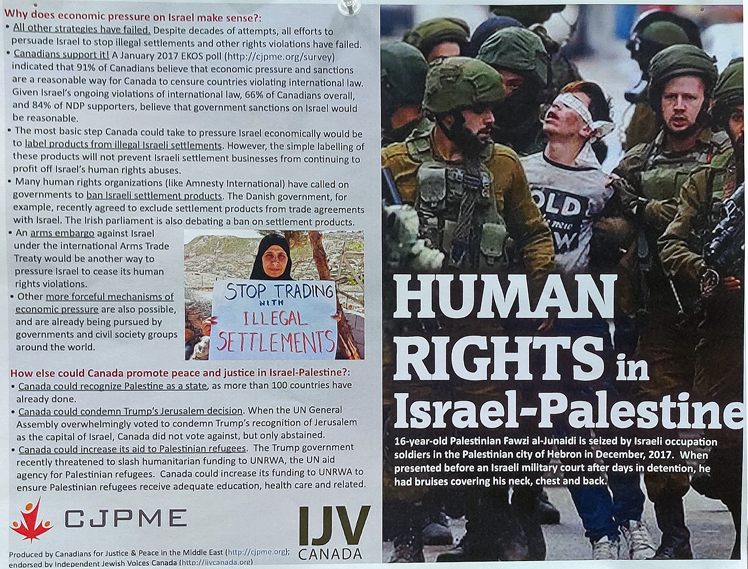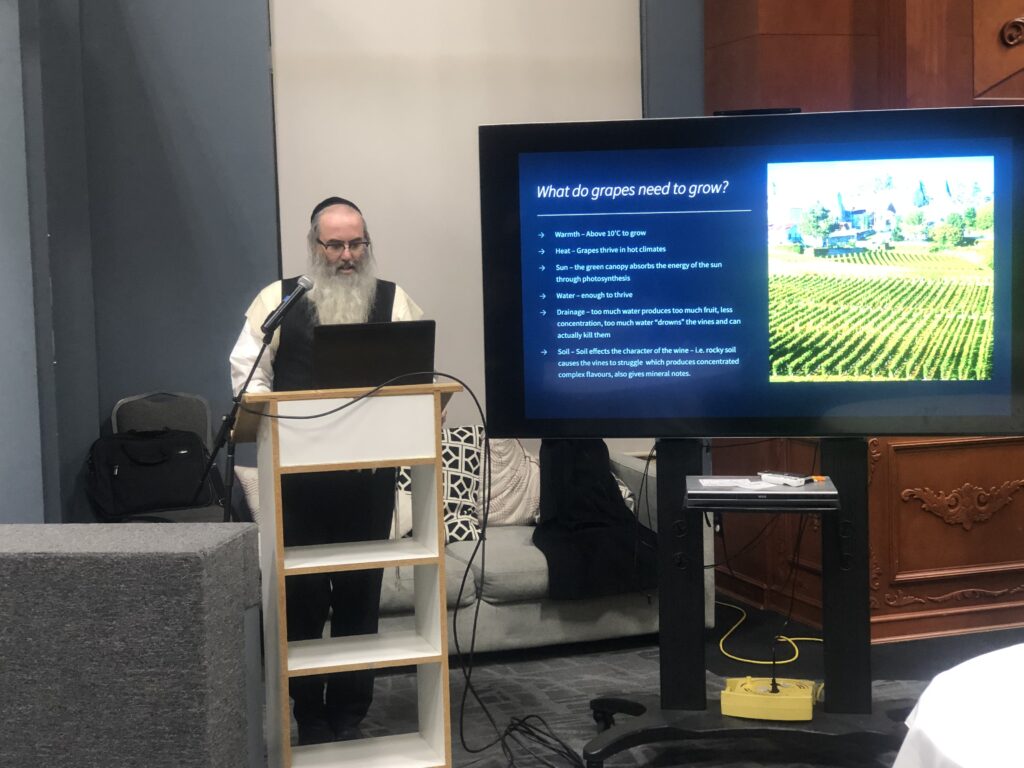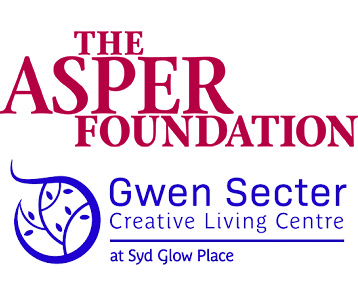Local News
Are students and staff at either the University of Manitoba or University of Winnipeg feeling threatened since October 7?

By BERNIE BELLAN With tensions heightened to unprecedented levels at some university campuses across the US and Canada as a result of the war between Israel and Hamas, I wondered what it’s been like for students and staff at the Universities of Winnipeg and Manitoba this past month.
I set about contacting students, professors, and representatives of administrations at both universities.
As a preamble to writing about what I found out, it is important to explain that ten and a half year years ago, as a result of the efforts of Josh Morry, then a Commerce student at the University of Manitoba, a group know as Students Against Israeli Apartheid (or SAIA for short) was banned from the University of Manitoba campus.
Morry was able to use the University of Manitoba Students Union’s own rules to bring about that result. Morry cited something called Policy # 2009: “UMSU does not condone behaviour that is likely to undermine the dignity, self-esteem or productivity of any of its members or employees and prohibits any form of discrimination or harassment whether it occurs on UMSU property or in conjunction with UMSU-related activities. Therefore, UMSU is committed to an inclusive and respectful work and learning environment, free from:
- discrimination or harassment as prohibited in the Manitoba Human Rights Code;
- sexual harassment; and
- personal harassment.”
Not much more was heard about the decision to ban SAIA from the U of M campus for years – until recently, when another anti-Israel group, this time with a different name but the same agenda as SAIA, organized a demonstration against Israel on October 13. The demonstration was in response to Israel’s moves against Hamas following Hamas’s massacre of Israelis and foreign nationals on October 7, along with the taking of what we now know were 240 individuals as hostages.
The name of the group this time is Students for Justice in Palestine (or SJP for short).
What this group has been able to do, however, is take advantage of the fact that it is not a registered group on the University of Manitoba campus and, as a result, both the university administration and UMSU say they are powerless to prevent it from holding demonstrations or from disseminating anti-Israel literature.
In what seems akin to a Catch-22 situation, in an email I received from Vanessa Koldingnes, Vice-President External at the university – in response to a question I posed to her about SJP, Ms. Koldingnes wrote, with reference to SPJ: “this group is not currently recognized as a registered student club by UMSU. This does not prevent this group from assembling peacefully or booking university space for events or displays, in accordance with UM’s Use of Facilities policy.”
Apparently, however, UMSU has refrained from banning SJP because, according to a source within Hillel, the Jewish students’ organization at the U of M, SJP hadn’t completed its application to become a recognized organization on campus. As the source told me, UMSU is taking the position that “oh well, they’re not a club; we’re not taking a position on them. There are fewer restrictions on unofficial groups than there are for official groups – for some reason.” (I attempted to contact UMSU for a response, but did not hear back.)
In other words, because it hasn’t been banned yet from the University of Manitoba – for engaging in exactly the same kind of behaviour as its predecessor organization, SAIA, which led to its being banned by UMSU, SJP will be allowed to conduct protests against Israel on campus – and have a table in the University Centre where its members will be allowed to disseminate anti-Israel and pro-Hamas propaganda.
In order to get a better feel for what’s been happening at both university campuses, I went down to both – to the U of W on November 1 and to the U of M on November 2. I spent considerable time looking around to see whether there were any overt displays, either anti-Israel or pro-Israel, on both campuses.
Since news of the heightened dangers Jewish students at many campuses in the United States – especially at some Ivy League schools, in particular Cornell, along with York University here in Canada, have been facing, I wondered what Jewish university students in Winnipeg – or professors, for that matter, have been experiencing these past four weeks.
When I attended both universities I was quite expecting to see the kinds of fanatically anti-Israel posters that have been commonly displayed at so many American universities. I was pleasantly surprised to see that there were no posters of any kind visible at either university – neither anti-Israel nor pro-Israel.
I had heard, however, that students at the University of Manitoba who had been wearing visible Jewish symbols, such as a kippah or Star of David, had been subjected to harassment at that university, including being spat upon.
In order to find out first-hand what it’s been like for Jewish students at the U of M these past four weeks, I made my way to the Hillel office in the University Centre. When I entered the quite small office I was surprised to see so many students – there must have been at least 20, crammed into such a small space. It was lunch hour, however, and many of the students that I saw were eating their lunches. Several of them were wearing kippot or Stars of David.
I was able to speak with one of the students (who asked that I not identify them by name; they were naturally concerned for their safety and when I told them that I was also going to post this article to our website, we both agreed that, for their sake, they should remain anonymous).
During the course of our lengthy conversation, the student told me several things about what life has been like for Jewish students at the U of M. I asked whether there have been any incidents involving Jewish students and members of Students for Justice in Palestine. I was told that whenever Jewish students (who are identifiably Jewish because they’re wearing either a kippah or Star of David) “go up to them” and try to engage in dialogue, “they’re told, ‘No, I don’t walk to talk to you – go away.’ On top of that,” the source said, “they’re putting out documents saying ‘’all Israelis are supremacists, all Israelis are settlers.’ “
Beyond the kinds of literature disseminated by SJP, I was curious to know whether there have been reports of Jewish students or professors being threatened, either verbally, physically, or on line. I was told that one Jewish professor at the University of Manitoba is especially nervous because of threats that professor has received, but was offered no specifics. I was also told about a Zoom call that took place Wednesday evening, November 1, in which a number of different professors from both the U of M and the U of W participated, sharing their recent experiences with antisemitism on campus. The source with whom I was speaking gave me the name of one professor at the University of Winnipeg who, the source suggested, might be able to share their recent experience with antisemitism.
I contacted Haskel Greenfield, Head of Judaic Studies at the University of Manitoba, to ask him whether he’s personally experienced any acts of antisemitism since October 7 or whether he knew of any professors who might have experienced any.
On Friday, November 3, I received an email from Haskel to which he attached a poster that had been put up opposite his office in the Fletcher Argue building at the U of M.
Haskel also sent me a copy of an email that he had just sent to a number of different individuals at the U of M:
“I am making a formal complaint that I am being targeted with hateful messages. Thursday morning, I found this poster posted on the wall opposite my office door in Fletcher Argue 447. As coordinator for Judaic Studies, I am being targeted and not protected by the UofM. It is shameful and frightening at the same time
“This was put up by a group that advocates the destruction of the State of Israel and all Jews, regardless of where they live. It is funded by known terrorist organizations as well. This poster openly advocates for the policies of BDS (Boycott, Divest and Sanction Israel and Jews) which is named as an example of an antisemitic policies by the government of Canada.
“I think it is time that such groups be banned from being on campus as they are promulgating hate speech, just as UMSU did 10 years ago, and how the entire state of Florida has done because SJP openly supports terrorists (just as they do on this campus as they have put out flyers telling students to take up the call of the military wing of HAMAS). No one else on my floor had such a notice put up opposite their door.
“Maybe it is time to consider beefing up security for Jewish professors and students, and to limit access to the 4th floor of FA, especially after the recent break-ins and homeless people sleeping there. I have to keep my doors locked at all times now given the lack of security and dangerous people prowling the hallways.
“I have removed the offensive poster from the wall. I am attaching a copy for you.”
In response to Haskel’s email, I emailed a question to Vanessa Koldingnes, in which I asked, “I see that the poster has IJV on the bottom as well as CJPME. I wonder what the university’s policy is re allowing either of those groups to put up posters on campus?”
Ms. Koldingnes responded, ”I can confirm these posters were not approved. When security observes a poster without stamped approval, it is removed.”
I also contacted the professor at the University of Winnipeg who, I was told by the Hillel representative, had been part of that Zoom call on Wednesday evening and had mentioned antisemitism at the U of W. That professor did respond (and again, the professor preferred to remain anonymous). They wrote though, that I was misinformed by the Hillel representative; they have not encountered any overt forms of antisemitism at the U of W.
In the email sent to me by that professor, they wrote: “I have not seen any direct or overt forms of antisemitism or anti-Israel propaganda.” Instead, they referred to “the covert or systemic forms of antisemitism that we’ve experienced at the university. Anecdotally, some students have told me they feel unsafe, and one mentioned a professor downplaying antisemitism. But, again, these are anecdotes and I don’t have any evidence to prove this.
“I will say, however, that I see colleagues on social media calling the flag of Israel fascist (which should concern anyone who sends their children to Jewish schools, goes to the Rady JCC, or who attends a synagogue, all of which are places that fly the flag of Israel.) The same colleague also refers to Israel on social media as ‘whiteness,’ but there are issues of academic freedom that come into play here; and, this is something, however, that I have already discussed with the Human Rights and Diversity Office at the university, with whom I have a meeting next week.”
While Jews are experiencing new and unprecedented levels of antisemitism throughout the world, and there has been at least one incident reported by the Winnipeg Police Service about a bullet being shot through the window of a Jewish-owned home, the situation in Winnipeg has not, so far, been shown to be as dangerous for Jews as it is in so many other cities. Granted, the level of vitriol on social media has shot through the roof. So many of us have seen absolutely vile antisemitic posts on social media – some originating in Winnipeg, but aside from that one very scary incident of a bullet being fired through a window, along with other reports of swastikas appearing at certain locations, we haven’t received reports of the kind of threats against Jews here that have become widespread in other parts of the world.
And, while Jewish students and professors at our two major universities may be feeling insecure these days, relatively speaking, Winnipeg students have not seen anywhere the level of overt antisemitism that has reared its ugly head at so many other campuses throughout North America.
Local News
Canadian produced kosher wine now available in Winnipeg

By BERNIE BELLAN With the imposition last February of a ban on the sale of American liquor in Manitoba, the only type of kosher wines that were available here were from Israel, specifically wines produced by the Galil winery.
Since the latter part of September, however, kosher wines produced by a Canadian winery are now available in Manitoba liquor marts, also the Kenaston Wine Market.
The wines – a red and a white, are produced by a winery known as Tzafona Cellars – located in the Niagara region of Ontario.

On Tuesday, December 2, Rabbi Avraham Gislason, who is a a rabbi in Thornhill, as well as a Tzafona Cellars winemaker, spoke to a large crowd at the Jewish Learning Centre, where he not only explained how kosher wine differs from non-kosher wine, he brought along bottles of five different wines produced by Tzafona Cellars for members of the audience to taste.
So – what makes a wine kosher? you might ask. According to the internet, “A wine is kosher if it is made according to Jewish dietary laws… with strict supervision and handling by Sabbath-observant Jews from the crushing of the grapes to the bottling of the finished product. The winemaking process must use only kosher-certified ingredients, such as yeast and fining agents, and rabbinically-approved equipment.
Rabbi Gislason himself started Tzafona Cellars in 2014. According to the Tzafona website, Rabbi Gislason saw that the “soil, air, and microclimate of the Niagara Peninsula all come together to create an up-and-coming world class wine region, yielding a unique experience that cannot be recreated anywhere else in the world.”
While he appreciated the quality of the wines being produced in the Niagara region, there was one problem: None of the wines were kosher.
According to the Tzafona website, “Starting with the 2014 vintage, Tzafona began to produce kosher wines using the same techniques and high-quality grapes used in producing other premium non-kosher wines. Since then, Tzafona has continued to produce a variety of different wines, namely Cabernet Sauvignon, Riesling, and Chardonnay. We have produced award-winning Icewines in the Vidal, Riesling, and Gewurtzraminer varietals. Tzafona is the only kosher Icewine producer in North America. Their Cabernet Franc Icewine won a Gold Medal at the All Canadian Wine Championships in 2025.
In 2016 we began to produce a line of refreshing semi-sweet wines under our brand “Nava Blanc” and “Nava Ruby.” (It is the Nava Blanc and Nava Ruby wines that are now available in Manitoba). Both of these wines are Tzafona’s bestsellers here in Canada and the USA.
The process of getting Tzafona wines approved in Manitoba was set in motion by Winnipeg marketing specialist Marsha Friedman, who for many years has worked as a marketing consultant and sales agent for businesses looking to offer premium kosher foods to their customers.
Her business, Excellence & Kosher, focuses on identifying unmet needs in the market. “I see a need and I try to fill it,” Marsha says.
“We also ensure that the most needed Kosher food products for the stores that carry Kosher are available, including Canadian Kosher wine,” she adds.
Marsha explains that she approached Tzafona—the only truly Canadian kosher wine company—some time ago with the idea of opening the Manitoba market for them and introducing their wines to local consumers.
Afterward, she contacted tManitoba Liquor and Lotteries (MBLL), which agreed to begin carrying two Tzafona wines: Nava Ruby (Red) and Nava Blanc (White).
Since that initial success in making Tzafona wines available for purchase in Manitoba, Marsha says that she and her daughter Shira have been making similar progress in Alberta and hope to expand into the British Columbia market as well.
For more information about Tzafona Wines, including the addresses of stores in Winnipeg and throughout Manitoba that carry their products, please visit the MBLL Liquor Marts website:
https://www.liquormarts.ca/liquormarts
Go to “Find a Product” and type “Tzafona.” Both wines will appear. Select the wine you’re interested in, then click “Store Inventory.” A list of all MBLL Liquor Marts that carry that product will be displayed.
Marsha adds that “We are hoping to have more listings of Tzafona wines available for Pesach this year, and we will be presenting them to MBLL for their approval.
“L’Chaim!”
Local News
Thanks to a Grant from the Asper Foundation the Gwen Secter Centre will Soon Begin Offering Free Kosher Shabbat Meals to Jewish Seniors

By BERNIE BELLAN In these increasingly difficult times – when so many families are finding it difficult to make ends meet, one group in society in particular is being hard hit by escalating food prices: seniors.
As food prices continue to rise, many seniors are struggling to afford many food items that they had always enjoyed previously. And, when it comes to Jewish seniors who might want to continue to remain kosher, the struggle is even more difficult – as the price of kosher meat and chicken has gone up even faster than the price of nonkosher meat and chicken.
Now, in an attempt to provide a modicum of comfort to some of those Jewish seniors, the Gwen Secter Centre, with support from the Asper Foundation, is about to begin providing kosher Shabbat meals for up to 50 Jewish seniors on a weekly basis.
Here is how Becky Chisick, executive director of the Gwen Secter Centre, describes what is going to be called the “Mitzvah Meal Program” will work: “We will be launching a new food security program supported by The Asper Foundation. Food security is a going concern is our community, especially with seniors living on a fixed income. The Mitzvah Meal program will ensure no one in the Jewish community is unable to celebrate Shabbat and other important Jewish holidays throughout the year. This program will transform the lives of so many seniors.
“Gwen Secter Creative Living Centre will be working closely with Jewish Child and Family Services to identify those who qualify for the program. There are many seniors that are not able to access Kosher Meals on Wheels (which is already a subsidized program thanks to the Jewish Federation), due to financial restrictions. The Mitzvah Meal Program, Supported by The Asper Foundation, has different criteria than the Kosher Meals on Wheels program.
“During the pandemic, we quickly realized how many seniors were not able to celebrate Shabbat due to lack of resources and finances. The Mitzvah Meal program will provide up to 50 individual low-income seniors with a healthy and fresh Shabbat (meat) meal, including chicken soup, challah bun, full entree of chicken, starch and vegetables, and dessert. In addition, they will receive special holiday foods and tools, so everyone is able to celebrate Shabbat and other Jewish holidays. For example: latkes and sufganiyot for Chanukkah, hamantaschen for Purim, etc. Those that are able to light candles at their residence will also get Shabbat and Chanukkah candles.”
Becky added, however, that “We still require close to $10,000 to ensure we can accommodate the max for a year and I plan to apply to The Jewish Foundation for the support.”
We contacted Anita Wortzman, president of the Asper Foundation, to ask her how the Asper Foundation became involved in this program. Anita responded: “The Asper Foundation is thrilled to support Gwen Secter Creative Living Centre and their new Mitzvah Meal Program. We believe that seniors in our community should be treated with the dignity, comfort and connection that Shabbat and the Jewish holidays bring. The long-term work of Gwen Secter Living Centre in delivering kosher meals on wheels, makes this a wonderful extension of that service to the Jewish community.”
As to how recipients of the “Mitzvah Meals” are chosen, we received this response from Alexis Wenzowski, Chief Operating Officer of JCFS: “Our priority will be ensuring that low-income seniors, those experiencing social isolation, and those facing mobility or transportation challenges are referred into the Gwen Secter program in a timely and effective manner.
“We have shared information about the Gwen Secter Food Security for Seniors Program across our Mental Health and Addictions, Settlement and Integration, and Older Adult Services teams. These program areas collectively serve some of the most marginalized and isolated seniors in our community, many of whom face complex barriers to accessing nutritious kosher food. We foresee there to be many referrals from these JCFS (programs into the Gwen Secter initiative. We are grateful and excited there will now be a formalized cooked meal Shabbat program for food insecure seniors.”
Alexis added this note about the number of individuals within our Jewish community who seek assistance from JCFS as a result of financial pressures: “JCFS is keenly aware that financial stressors and the cost-of-living crisis is impacting everyone. Food insecurity continues to be a significant and growing concern across our community, as it is in all communities. In the past year alone, our Asper Empowerment Program supported 179 unique households, with 7,542 kg of food security supports. An additional 122 households received employment and financial supports — including interest-free loans, grants, gift cards, and budgeting guidance — underscoring the breadth of need we are seeing. People are struggling.”
As noted, however, while Becky Chisick stated that the Asper Foundation funding will help to get the program going, the Jewish Foundation is being approached to provide additional funding in order to guarantee that the program can continue for at least one year. In the meantime though, if you would be interested in making a donation to help fund the program, Becky encourages you to make your contribution to the Gwen Secter Centre, stipulating that you want the money to go to the Mitzvah Meal Program.
One more note: While there are already some volunteer drivers in place once the program begins, more are still needed. To volunteer as a driver, contact Vanessa Ordiz at the Gwen Secter Centre: vanessa@gwensecter.com or phone 204-339-1701. Volunteers will be provided quarterly tax receipts for their service.
At the same time, by volunteering as a driver, it will allow for meaningful connections between clients and volunteers. For many clients this may be the only person they connect with that day.
Local News
Community leader Sheldon Zamick role model of perseverance despite life’s vicissitudes

By MYRON LOVE For Sheldon Zamick, life is a marathon, not a sprint – and there is always more to learn. In a life marked by struggles, he has overcome adversity and written a story of success both in business and community leadership.
Over the years, he has given of his time and experience to a great variety of charitable organization – including the Jewish Federation, the CJA, the JNF, Canadian Associates of Ben-Gurion University of the Negev, the Canadian Magen David Adom, the Shaarey Zedek Synagogue (he is currently the Board’s finance chair), the Canadian Museum for Human Rights, Mount Carmel Clinic, the Variety Club, Muscular Dystrophy, Habitat for Humanity, Siloam Mission, and the Canadian Institute for the Blind. The most recent charitable organization that has benefited from his leadership has been the Lake Winnipeg Research Consortium.
He took on his most recent challenge as executive director of the Lake Winnipeg Research Consortium last year after stepping away from a 40-year career in real estate sales. “This is a really big responsibility,” he says of taking the helm of the LWRC.
As noted on the LWRC webpage, the organization was founded in 1998 “to facilitate scientific research on Lake Winnipeg following evidence of water quality deterioration related to the 1997 Red River ‘Flood of the Century’. The LWRC was incorporated in Manitoba in 2001 and received charitable status in 2008”.
“Our organization does vital research in regard to Lake Winnipeg,” Zamick points out. “Our 328-ton, 110-foot-long ship, the MV Namao – which celebrated its 50th birthday this past August (during which over 1200 supporters toured the boat) in Gimli – is out regularly in the spring, summer and fall on Lake Winnipeg taking water samples. We provide the research platform for scientists to conduct research with regard to climate change and the state of the lake and fish population. We offer science education year round, group tours and summer camp programs for kids.”
He adds that the consortium works closely with many stakeholders, including the Universities of Manitoba and Winnipeg, and receives funding from the Winnipeg Foundation, the Canada Water Agency, Manitoba Hydro, the Manitoba Government, the City of Winnipeg, the town of Gimli, other municipalities and many individual donors.
“It has been great getting the opportunity to meet with various government officials, research partners and donors,” he says.
Sheldon Zamick is a role model demonstrating that an individual growing up in humble surroundings and having to deal with adverse circumstances can succeed in life. He recalls how he had to go to work early in life – at the age of 12 – to help support his family. “We moved around a lot when I was growing up in the North End because my parents could never afford to buy their own home,” he recounts. “That is what drew me to a career in real estate.”
His first job, he says, was peeling potatoes in the basement at Kelekis (a long gone North End Winnipeg restaurant which those of us of a certain age still fondly remember). “I had to learn at an early age to be self-sufficient,” he notes.
In his university days, he worked part time as a corrrections officer – taking as many shifts he could get – at the Winnipeg Remand Centre.
He also demonstrated his leadership capacity at an early age. At 17, he served as president of the USY chapter at the former Rosh Pina Synagogue (even though his parents couldn’t afford to be members of the shul).
After graduating from the University of Manitoba with degrees in Economics and Psychology, he founded TV Facts Magazine, a free weekly TV and shopping guide which some readers may remember. “TV Facts was part of an international chain of publications,” he recounts. “I had to travel to New York to learn how to run a magazine. At our peak, we were putting out 50,000 copies a week – which were available in over 500 locations.”
It was in 1985 that Zamick pursued his interest in becoming a realtor – a profession in which he excelled. Over 40 years as a realtor, he received numerous sales awards, also recognition for his leadership role in his profession and his numerous contributions to the wider community. In the former field, he served for five years as a member of the Winnipeg Real Estate Board, including a term as treasurer and chairing the Government Relations committee.
In 2013-14, he was elected as a director of the 120,000-member Canadian Real Estate Association.
Zamick was recruited into volunteering in the Jewish community, he notes, in the mid-1980s by Laurie Goldberg and the late Larry Rosenberg, who were co-chairs of the Federation’s Young Adult Division. Sheldon subsequently served as co-chair –with Sid Halpern – of the 1987-88 Combined Jewish Appeal’s New Gifts Division.
“We were responsible for contacting members of the community who hadn’t given for a long time,” he explains. “We were really successful in persuading many of them to contribute to the campaign and (by extension) the community.”
That year, he and current outgoing Federation president Paula Parks were nominated to receive our community’s Young Leadership award. Zamick was presented with the Harry Silverberg Young Leader of Distinction Award by Nora Kaufman, the late Harry Silverberg’s daughter.
He later served as the CJA’s campaign director from 1989 to 1992. “During the 1989-90 campaign – that included Operation Exodus (aimed to help Jews leave the dying Soviet Union) – we raised an extra $2 million- bringing in a total of $6-million that year.”
In 1992, Zamick was afflicted with a condition that might have derailed a lesser individual. He was diagnosed with Retinitis Pigmentosa, a condition that left him legally blind. The ever resilient Zamick however took the diagnosis in stride. In 2022, he told an online publication called “Slideshare” that, after the diagnosis, he chose to be thankful for what he had rather than focus on what he had lost.
He added that while legally blind, he still has some sight in certain lighting. “It is a unique way to live,” he told Slideshare, “but you have to adapt to it and I haven’t let it stop me.”
He has been helped immensely by his longtime, supportive wife, Florence.
Typically, following his diagnosis, he threw himself into volunteering with the Canadian National Institute of the Blind. He served on the board of the CNIB for 16 years and was a leader in raising the funds one year – when the CNIB was facing government cutbacks.
Zamick is planning to retire from his current position at the end of this month. He says that he and Florence are looking forward to spending more time with family and friends, travelling –a pasttime they both enjoy, and getting together with their children – Natalie in Toronto and Steven and his wife Ally, along with granddaughters Isabella and Mikayla in Montreal.
He is however, still open to new possibilities. “You never know who might call next,” he observes.


